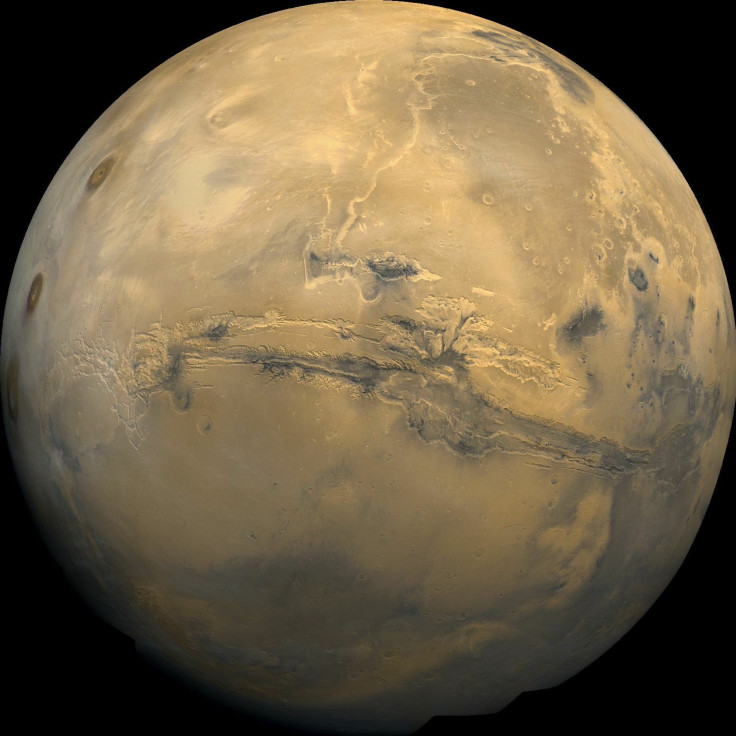Free-Flowing Water On Mars? Seasonal ‘Oases’ Are Enticing But Dangerous Locations For Research [VIDEO]

Researchers have discovered what appears to be flowing water near the equator of Mars. The water may flow during certain seasons and while it may be tempting to immediately launch a research mission to these locations, there is plenty of peril that must be considered ahead of any mission to Mars.
The new study was led by Alfred McEwan of the University of Arizona in Tucson and published in the journal Nature. Per the study’s abstract, “The presence of liquid water is a requirement of habitability on a planet. Possible indicators of liquid surface water on Mars include intermittent flow-like features observed on sloping terrains.” The researchers said these lineae, ridges that appear on the surface, occur during the warmer seasons, lengthening over time and fading during colder seasons.
This pattern occurred over several years of observation, using data from NASA’s Mars Reconnaissance Orbiter. The features were most commonly seen in Valles Marineris, a system of canyons located near the Martian equator. McEwan previously found seven sites featuring slop lineae in the southern mid-latitudes of Mars in 2011, notes Nature. In the latest research, McEwan and his team discovered 12 sites.
The researchers were unable to determine a possible source of the water or what is actually flowing in these observations but everything indicates water. The study concludes, “Although the origin of the recurring slope lineae remains an open question, our observations are consistent with intermittent flow of briny water. Such an origin suggests surprisingly abundant liquid water in some near-surface equatorial regions of Mars.”
Speaking to Nature, McEwan believes water reserves underneath the surface of Mars may be the likely origin of the slope lineae, and that area may have the best potential for life on the planet. "The subsurface is probably the best place to find present-day life if it exists at all because it is protected from the radiation and temperature extremes," said McEwan.
While the discovery of what could be a vast pool of water on Mars seems appealing, any space agency looking to follow up on the discovery would need to ensure they take every measure possible to avoid the risk of potential cross-contamination. Any spacecraft or probe must be thoroughly sterilized and completely clean to avoid any cross-contamination, eliminating the possibility of bringing Earth microbes to Mars or bringing back Martian microbes to Earth. McEwan, along with Josh Rummel, head of the Committee on Space Research's, COSPAR, panel on planetary protection, will present the report to COSPAR in August to determine if the region should be classified as a "special region," reports Nature.
A video of the flowing water evidence, courtesy of Nature, can be viewed below.
© Copyright IBTimes 2024. All rights reserved.






















